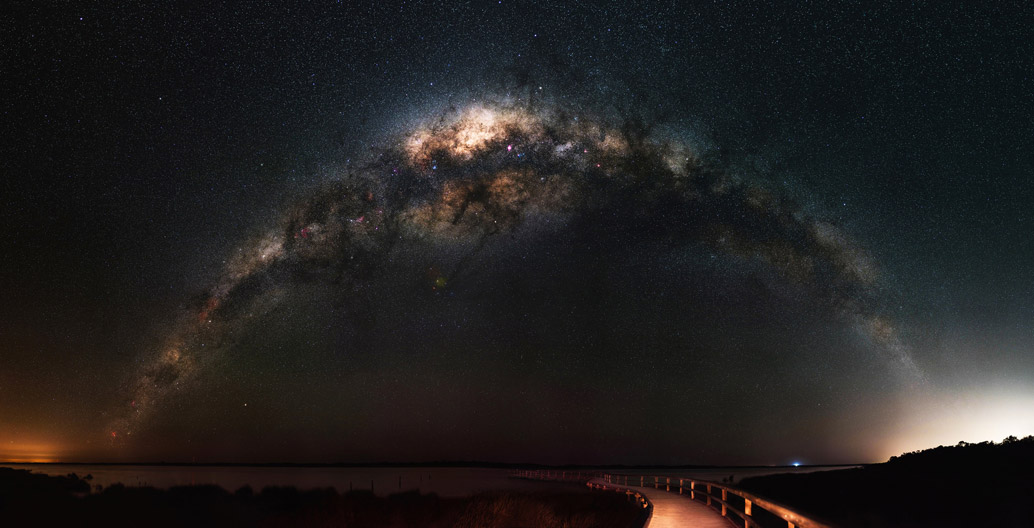
Streets at night: dark sky tactics to reconnect with the stars
Across the globe there is increasing evidence that unfettered light pollution has far-reaching consequences for humans and non-humans alike. At the same time, a growing fascination for star-gazing hints at a deeper existential interest in the costs of losing access to dark skies.
June in Hobart heralds Dark Mofo – the public-art fuelled winter festival that draws thousands of people onto the streets. Established in 2012 by the Museum of Old and New Art (MONA), the festival is now a much-anticipated annual celebration of the night.
Roads and entire precincts are closed, children roam free through a nocturnal playground called “Dark Park”, while adults strip naked and plunge into the Derwent River’s ice-cold waters. There are bonfires, candle-lit food halls and burning effigies to add to the highly-curated mayhem – all in the name of finding “new ways to experience the darkness”, according to the festival’s creative director Leigh Carmichael.
A few blocks away in the CBD’s Liverpool Street it’s another scene entirely. New streetlights beam down to reveal streets devoid of activity. The lighting fixtures are part of a $3 million upgrade to the street by Hobart City Council in 2016. If the investment was expected to bring about a street-life renaissance, or, according to local trader Edward Harry, “the return of Liverpool Street to its former glory…[as] a pedestrian destination…” during the evening at least, the “contemporary light fixtures” have had the opposite effect.
“Liverpool Street is grossly over-lit,” says Jerry de Gryse, director of Inspiring Place, a Hobart-based landscape architectural practice. “There’s a particular street corner where you can see [the difference between] the old and the new lighting. You look toward the old lighting and it’s warmer and the fixtures target the light onto the street. It’s a perfectly safe street. Then you look at the new lighting where the fixtures aren’t targeted, which means that the second, third and fourth storeys of the buildings along the street are all lit up. It’s so bright that nobody wants to be there and you lose the passive surveillance that comes with night activity.”
Landon Bannister, a lighting specialist from Southern Lighting, also in Hobart, regularly uses Liverpool Street as an example of what not to do when it comes to lighting design. “That project is a classic example where the designers wanted to turn it into a more pedestrian area, and draw more people into the street during the evening. Their answer was to make it really bright. But when you treat a night-time space as if it were day-time, you do the opposite of what makes a place appealing.”
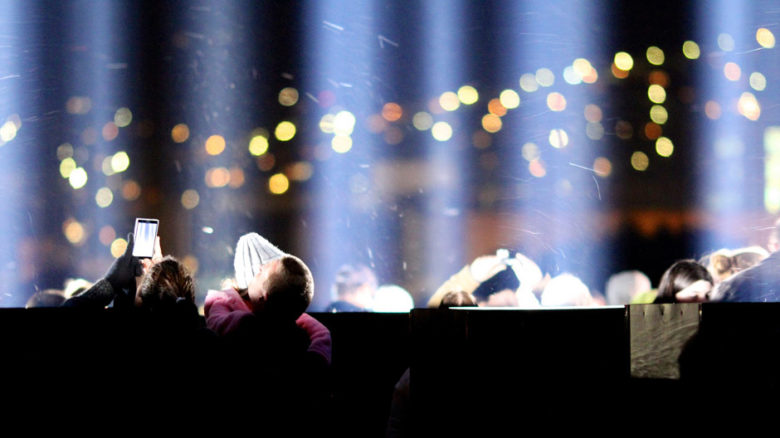
'Spectra' at Dark Mofo offers a playful and engaging nighttime experience. Credit: Paris Buttfield-Addison, Flickr: CC
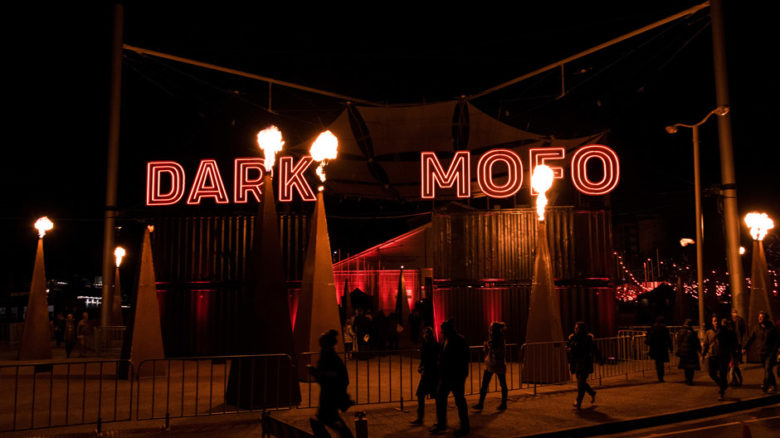
Dark Mofo's Winter Feast is a celebration of the night. Credit: Mark Pazolli, Flickr: CC
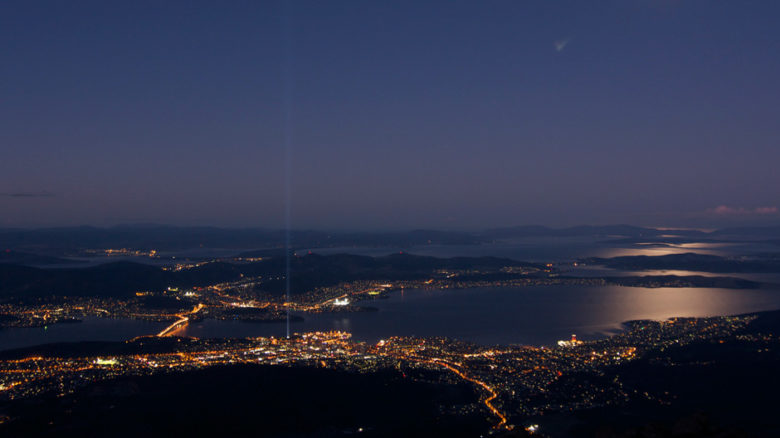
Ryoji Ikeda's Spectra beams light 15 kms into the sky during Hobart's Dark Mofo. Credit: Christopher Neugebauer, Flickr: CC
A lighting salesperson may seem an unlikely champion of the dark sky movement, however for Bannister, it’s actually fairly simple. “Lighting specialists are interested in how people interact with light – that’s what we trade in.”
If you ask someone to describe what lighting is for they’ll usually talk about being able to see, says Bannister. “That’s a perfectly acceptable answer, but there are other aspects of light that affect us.” For example, to understand the emotional impact of light is easy: “the difference between how happy you are when the sun is out versus how you feel when it’s overcast”, and is used in interior lighting schemes to great effect. To take that understanding outside, and use lighting to attract people to spaces makes sense, but for Bannister it doesn’t happen as often as it should.
Bannister’s interest in dark skies began after seeing The City Dark, a documentary film about light pollution and the loss of night, in 2012. “Living in Melbourne at the time I think the impact was lost on me,” he quipped during a presentation to AILA Tasmania members, before recounting how, after moving to Tasmania and commuting between Melbourne and Hobart for six months, he began to notice the nocturnal differences between the two cities. “I would have no stars during the week and experience fantastic night skies over the weekend. I started to realise what we had lost.” Today around 80% of the world’s population lives under artificial skyglow, and the milky way can’t be seen by a third of humanity.
Creating safe streets at night
There’s a prevailing assumption that for streets to be safe, or at least, perceived to be, they must be well-lit. However, the evidence is unclear. “As little as a month ago there was a study saying ‘more lighting equals less crime’. Two days later there was another study, which found no correlation between lighting and less crime. The best study I’ve ever seen looked at all the studies and if anything found that [brightly-lit environments] increased crime.” That study, according to Bannister, took the extra step of interviewing convicted criminals, who said “actually we hate the dark – we can’t see what we’re doing!”
The key term is “well-lit,” says Bannister: “People do feel safer in well-lit environments, but if we only measure light in terms of numbers – it’s impossible to measure how well an eye is working in that space.” Given the chance, our eyes can adapt to darkness. What’s needed is a change in mindset to understand the difference between daytime and nighttime lighting requirements, and we should think in terms of light quality, rather than quantity. Bannister maintains that we could light spaces to a quarter of the level that’s commonly employed and still feel safer: “a well-lit space is one where there’s no glare, the eye can perform well, there is some contrast and visual interest, and we can enjoy our experience in that space.”
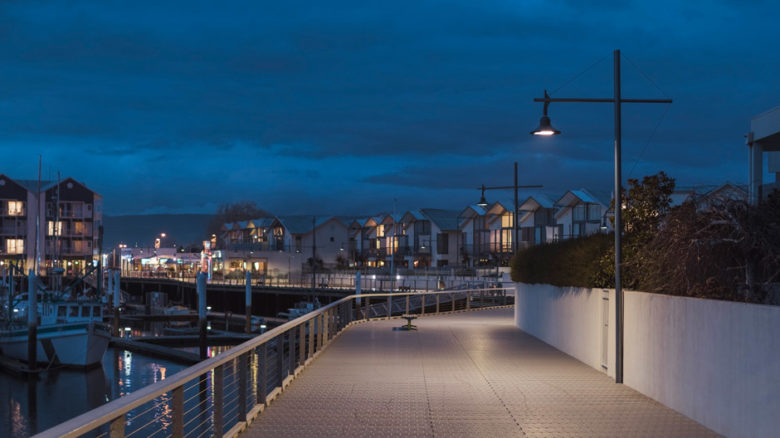
Launceston Seaport's lighting upgrade achieved energy reductions and improved pedestrian experience. Credit: WE-EF
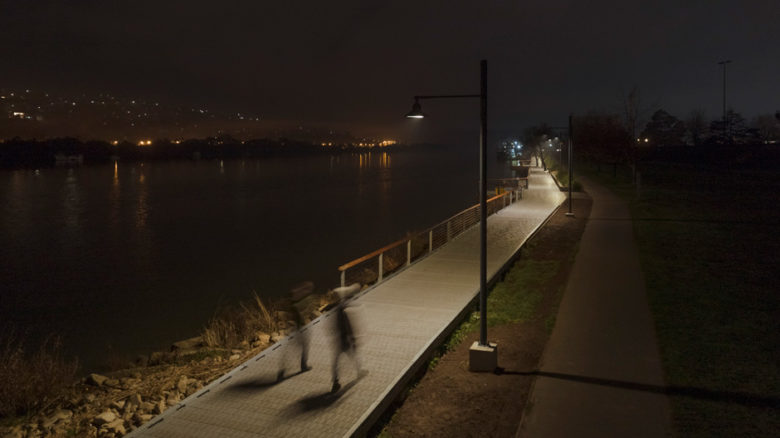
Launceston's Royal Park uses targeted lighting to maintain the experience of a dark sky. Credit: WE-EF
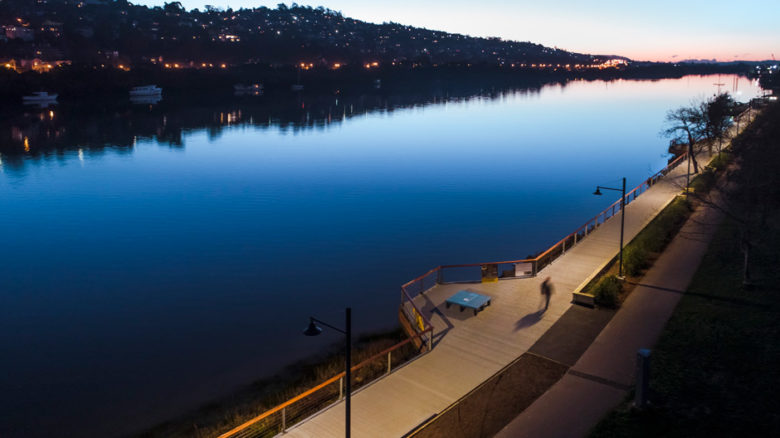
Launceston's Royal Park lighting meets human needs while reducing light trespass into the waterway. Credit: WE-EF
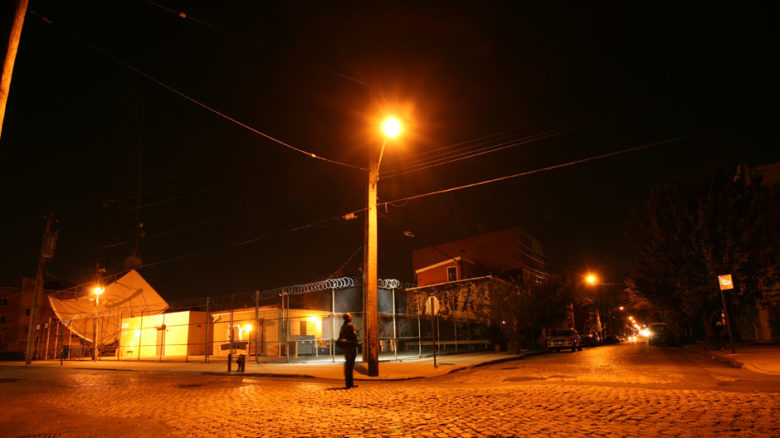
The City Dark filmmaker Ian Cheney under a typical streetlight in New York City. Credit: Wicked Delicate Films LLC
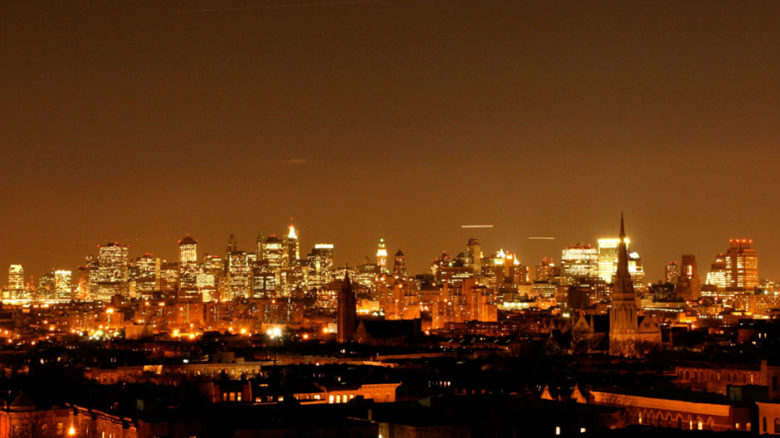
Manhattan Skyline shown in 'The City Dark'. Credit: Wicked Delicate Films LLC
It’s well documented that the rise of LED lighting in a bid for energy efficiency has had the opposite effect. It’s a clear example of the Jevons Paradox, where technological progress to increase energy efficiency means more people use more lights for longer. “Globally, we haven’t realised any real energy savings, all we’ve done is increase light levels and light pollution,” says Bannister. “We’ve got to put human needs back into these light fittings,” and that means developing lighting literacy.
“When people come and say ‘I want bucketloads of light and to make bucketloads of energy savings’, they’re coming at it from the wrong angle. Instead, we ask ‘how do people use the space, how do we address those needs, and make them comfortable?’” Bannister points to Southern Lighting’s recent upgrade at Launceston’s Seaport and Royal Park, which achieved the all-important energy savings, while also creating a more pedestrian (and wildlife) friendly environment, simply through pulling light back to where it was required through the use of a well-designed luminaire.
This myopic demand for achieving energy efficiency means that we’re creating daylight conditions 24 hours a day, with far-reaching health consequences on humans and wildlife alike. Light pollution is known to disrupt circadian rhythms and sleep quality, with countless negative health impacts, including risk of breast cancer in women, and myriad impacts on wildlife.
“The only reason to put a light fitting outside is for people. If you want to save energy, don’t put any light fittings outside – the animals don’t need it,” says Bannister, who argues for using light responsibly in ways that consider the impacts on all the inhabitants of those spaces:
“Animals are no different to human beings – they’re also diurnal and we know they’re affected by our light pollution. That’s probably the bigger part of the story, humans will always do bad things to themselves, but we shouldn’t be doing what we’re doing with animal life. We’re also seeing flow-on effects to fauna, which is decreasing in cities because over half of all pollination happens there.”
The Dark Sky is about “more than darkness”
Jerry de Gryse’s first true experience of Tasmania’s night sky came on an overnight stay on the east coast during design development for their award-winning Saffire Freycinet project, with profound affect.
“I walked between cabins to fetch a cup of tea, I looked up and thought, ‘Gee, it’s sort of cloudy, but it’s sort of starry too, what’s going on?’ It turns out the ‘cloud’ was the Milky Way. It was the first time I’d seen how dense it was.”
The celestial encounter marked a transition in the practice’s approach. “We immediately injected our design programme at Saffire with what we call the ‘respecting the dark’ concept.”
Their proposals to invest additional funds into building night-sky tourism features at Saffire were unsuccessful (“We got excited, we tried to convince the client to put an astronomical observatory on their site, that didn’t work. We talked about telescopes, that didn’t work!”), but dark sky appreciation was now firmly on their agenda. As a result, Inspiring Place achieved success elsewhere. “We pushed against night lighting on the site, to minimise its use and to clearly identify where it was essential, as opposed to what people imagined was needed.”
Both de Gryse and Bannister are members of the International Dark Sky Association (IDA), which champions natural night skies as “universal heritage”. Which doesn’t mean a complete disconnection from artificial lighting, and sometimes, such as at DarkMofo, or countless light art festivals around the world, it means celebrating it. “Lighting isn’t necessary in some situations, but it can also be a feature – it’s about balancing up where, when and at what levels it should be used,” says de Gryse. “We’ve seen a lot of designers using colours. There are two ways to do that, one is to make a statement that’s relevant, and the other is to put colour in just because we can.”
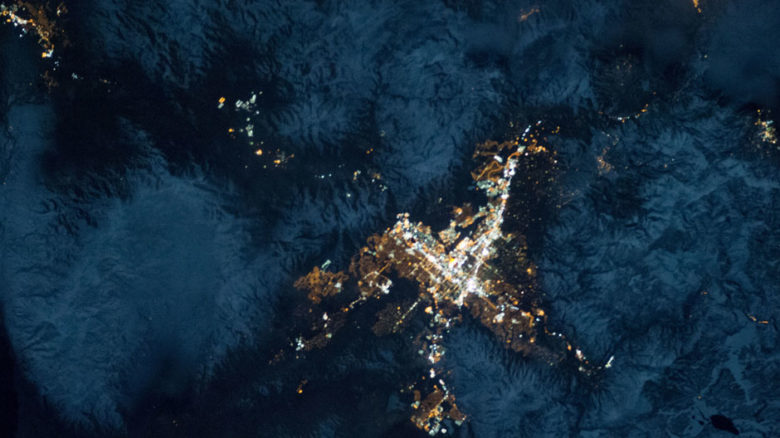
Reno in Nevada seen from space, awash in skyglow. Credit: NASA
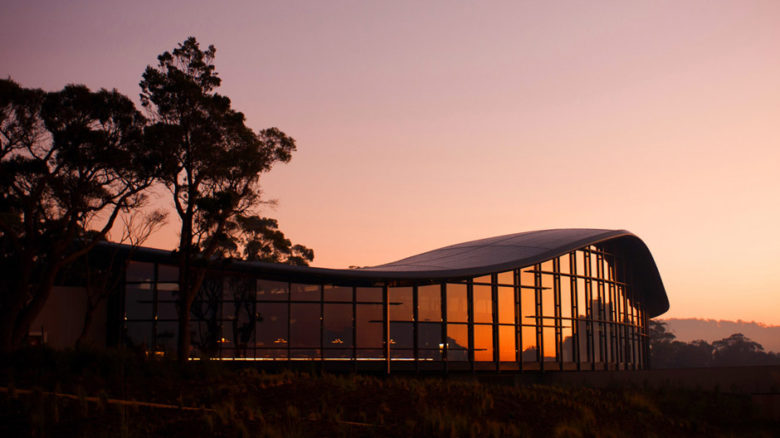
At Saffire Freycinet, Inspiring Place minimised artificial lighting on site. Credit: Saffire Freycinet Lodge CC
Inspiring Place has always worked in nature-based tourism, and are increasingly interested in the potential for “astral-tourism”.
“We know people travel the world to see dark skies, and we’ve been promoting this to our clients, and we’ve begun talking with local councils about ordinances and planning by-laws to help promote the concept of south-west Tasmania as a dark sky reserve.” De Gryse is probably onto something.
In May 2018, ABC TV’s Stargazing Live broadcast (in partnership with the Australian National University) broke the Guinness World Records title for people simultaneously observing the moon, when 40,000 people gathered at 285 stargazing parties around Australia. It’s testament to a growing interest in reconnecting with the night sky.
The US city of Flagstaff, Arizona, is the first city to be recognised as an International Dark Sky City and demonstrates what cities can do to balance essential external lighting against preserving access to darkness. “They’ve achieved appropriate levels of lighting that protect safety while making the city darker and the sky a more critical element of where they live,” says de Gryse.
The more you think about lighting and our relationship to darkness, the easier it is to see how Dark Mofo’s appeal has a lot to do with atmospherics, and that rare chance to re-connect to how human beings used to live, before electric lighting. If Hobart’s streets were all lit up like a supermarket car park, it’s doubtful the festival would achieve the same mood.
“Dark Mofo has always emphasised fires. All civilisation began with campfire – it’s a subdued, warm, glowing light that we’re biologically adapted to as a light source,” says de Gryse. And if some festival features are less subtle – like Spectra, by artist Ryoji Ikeda, which beams light 15 kilometres into the sky – they’re appropriate, says de Gryse, given they’re “only on for a few days of the year, unlike some of the advertising lighting and spotlights we see up on buildings.”
Which is not to say that every street needs the Dark Mofo touch. Good quality, responsible lighting interventions achieve their impact in far-less attention-grabbing ways. An unobtrusive light pole, for example, chosen specifically for its intended purpose, that considers light quality over quantity, and reduces energy and light trespass, could transform a street.
Perhaps increasingly we’ll look to technology that adapts to patterns of use and light conditions, as shown by Civil Twilight Design Collective’s “Lunar Resonant Streetlights”, which “respond to ambient moonlight, brightening and dimming as the moon cycles through its phases.” In these ways we can let the night, and darkness, back in to city life.


